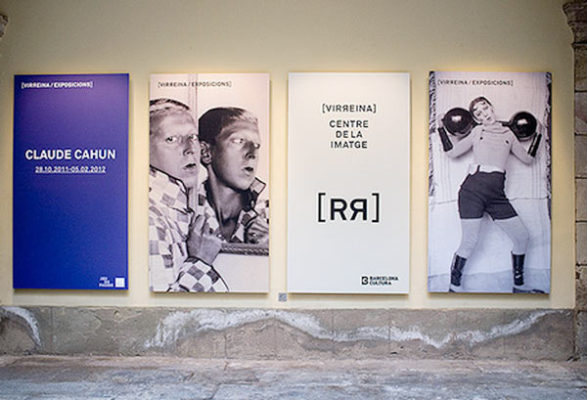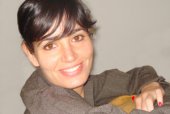Search
To search for an exact match, type the word or phrase you want in quotation marks.
A*DESK has been offering since 2002 contents about criticism and contemporary art. A*DESK has become consolidated thanks to all those who have believed in the project, all those who have followed us, debating, participating and collaborating. Many people have collaborated with A*DESK, and continue to do so. Their efforts, knowledge and belief in the project are what make it grow internationally. At A*DESK we have also generated work for over one hundred professionals in culture, from small collaborations with reviews and classes, to more prolonged and intense collaborations.
At A*DESK we believe in the need for free and universal access to culture and knowledge. We want to carry on being independent, remaining open to more ideas and opinions. If you believe in A*DESK, we need your backing to be able to continue. You can now participate in the project by supporting it. You can choose how much you want to contribute to the project.
You can decide how much you want to bring to the project.

La Virreina presents an exhibition of Claude Cahun and her multiple interpretations and uses of identity. The life, artistic productions and collaborative work converge in a polyhedral journey exploring one of those phenomena that for its very complexity was never much to the liking of the dominant historistic tradition of art and culture.
All approximations of the figure of Claude Cahun are marked by decades of ignorance. The invisibility of her work until well into the eighties has prompted that this late recognition has led to a certain mythification as much of her persona, as of her life and productions. Although advanced and exceptional for the time, the works of Cahun fit within a concrete context. On the one hand, during the twenties and thirties the field of European psychoanalysis was animated by debates about feminine sexuality. In 1929, the English psychoanalyst Joan Riviere gave her now famous lecture “Womanliness as a masquerade”, in which she analysed for the first time femininity as a performative apparatus and explored a new type of woman, which she defined as intermediate, for manifesting traits of the opposite sex. There are numerous photographs dated 1929 in which Cahun tackles not just the construction of identity, but also the mask itself as a symbolic object of identificatory de-construction. The mask, disguise and artifice: strategies that explore the limits of a body, which by way of them becomes inessential.
In 1929, she also took on the translation into French of some of the writings of Henry Havelock Ellis, whose controversial theories about sexuality tackle, amongst many other matters, the possibility of a third sex. “Masculine? Feminine? Well it depends … Neuter is the only gender that always fits” – writes Cahun in “Aveux non avenus” (Unavowed confessions) (1930).
The closeness of the artist with the Surrealist group in Paris, documented in the archival vitrines laid out around the exhibition, is another point to bear in mind. The work and life of Cahun are also “exceptional” within this context, for her condition as “woman” and lesbian, and for having truly overcome any division between art and life. However other authors, such as Man Ray and in particular Marcel Duchamp, had explored the question of transvestism since the beginning of the twenties, so the photographic performances of Cahun also fit within a certain tradition of the time.
The exhibition shows what had not yet been shown here. It comes from the Jeu de Paume in Paris and has been curated by Juan Vicente Aliaga and François Leperlier, Cahun’s biographer and the one responsible to a great extent for opening the way for her reconsideration. Part of the exhibition revolves around the relationship that she had with Marcel Moore (Suzanne Malherbe’s pseudonym), her stepsister and lover for the whole of her life. This link, so often obviated in the successive recoveries of her work, already appeared in the exhibition that the Tate Modern dedicated to her in 2006, where it was granted considerably more relevance than here.
The exhibition at la Virreina is completed with a programme of conversations and projections organised by “Screen from Barcelona”. The second session, “Autorretrato a cuatro manos: performatividad afectiva”(Self portrait for four hands: affective performativity) focused on the Cahun-Moore relationship through the projection of the documentary by Barbara Hammer “Love Other: The Story of Claude Cahun and Marcel Moore” (2006). If it was dealing with a self-portrait for four hands, it stopped being a self-portrait to become a collaborative project. The biographies of both seem to suggest that it would be quite hard to establish a univocal authorship. Cahun poses? Moore portrays her? Cahun writes “Aveux non avenus” (1930) both realize the photographic collages that complete the publication. In 1922 the couple install themselves in Paris, where they remain until 1937, the year they move to the isle of Jersey. Always together the art-life project of both alludes to a shared authorship, or what is more, its very dissolution. Nevertheless some revisions of her life and work under the creative couple remit run the risk of falling into an exaltation of romantic love, that however lesbian it might be, could seem reactionary.
The exhibition is ultimately a new attempt to rescue the figure of Claude Cahun, through the proposition of diverse revisions of her interdisciplinary work. For this, the archive material, as is customary in this type of exhibition, occupies an important place. Perhaps the most significant achievement of this project is not establishing any dividing line between the practices considered artistic and the life cycle of Cahun and also of Moore. Photographs, drawings, collages and archives are impregnated with daily life. Otherwise, the exhibition, although complete and correct in its approach to the diverse proposals of Cahun, doesn’t contribute much more to what has already been said about her in the last decades. It’s also not that easy.
An interesting part is that dedicated to the production of objects, a lot less well known than the photo-performances. The “combinations of objects”, the majority dated around the middle of the thirties, could form part of Surrealism to which the artist belonged without belonging. Even though she was involved in the Parisian artistic scene of the time and participated in some of the surrealist exhibitions, her figure was sufficiently singular to not be included in any specific movement. “… I remain anarchic”, she wrote in a letter to Bretón dated 1953.
The photo-montages of “Aveux non avenus” also catch one’s attention, as though they have a surrealist touch, they incorporate some questions that are omnipresent in the work of Cahun (or Cahun-Moore), such as duplication, mirror games or the dramatization of an nonexistent identity. In many of them, the body seems to appear fragmented, but how it is treated is far from the objectifying fragmentation of the feminine body perpetuated by some of the boys of surrealism.
During their stay in the isle of Jersey, both actively participated in the resistance against Nazism. From their house, situated in front of the barracks of the occupying forces, they began a campaign of counter-propaganda and designed and produced diverse pamphlets, some of which can been seen in the exhibition. They were arrested by the Gestapo and were on the point of being executed. A large part of their productions were lost during their arrest.
Claude Cahun and Marcel Moore. Lucy Schwob and Suzanne Malherbe. Duplication impregnates everything. I’m reflected in the other, the reflection of the other in me. From here, the construction of identity as a form of constant repetition. The deployment of a performative strategy, that since the end of the seventies, with the irruption of feminist theories within the arts, has not stopped being reconsidered and brought up to date.

Maite Garbayo is a writer and researcher. Art history, feminist crticial theory and pyschoanalysis are a few of the tools of her trade. She combines her research and writing with periods of teaching. Currently, she is working on her doctoral thesis and is the editor of the magazine {Pipa}.
"A desk is a dangerous place from which to watch the world" (John Le Carré)